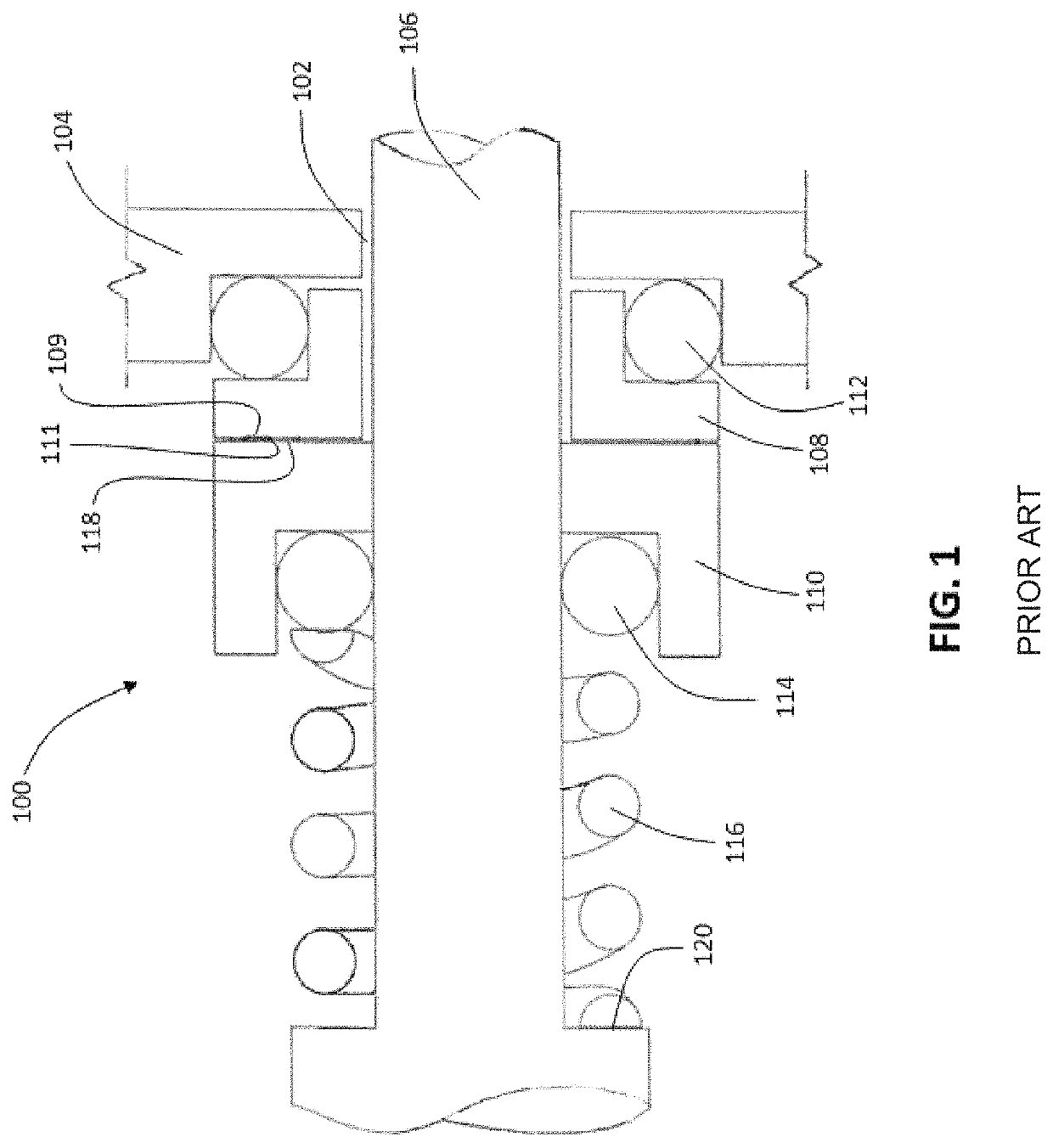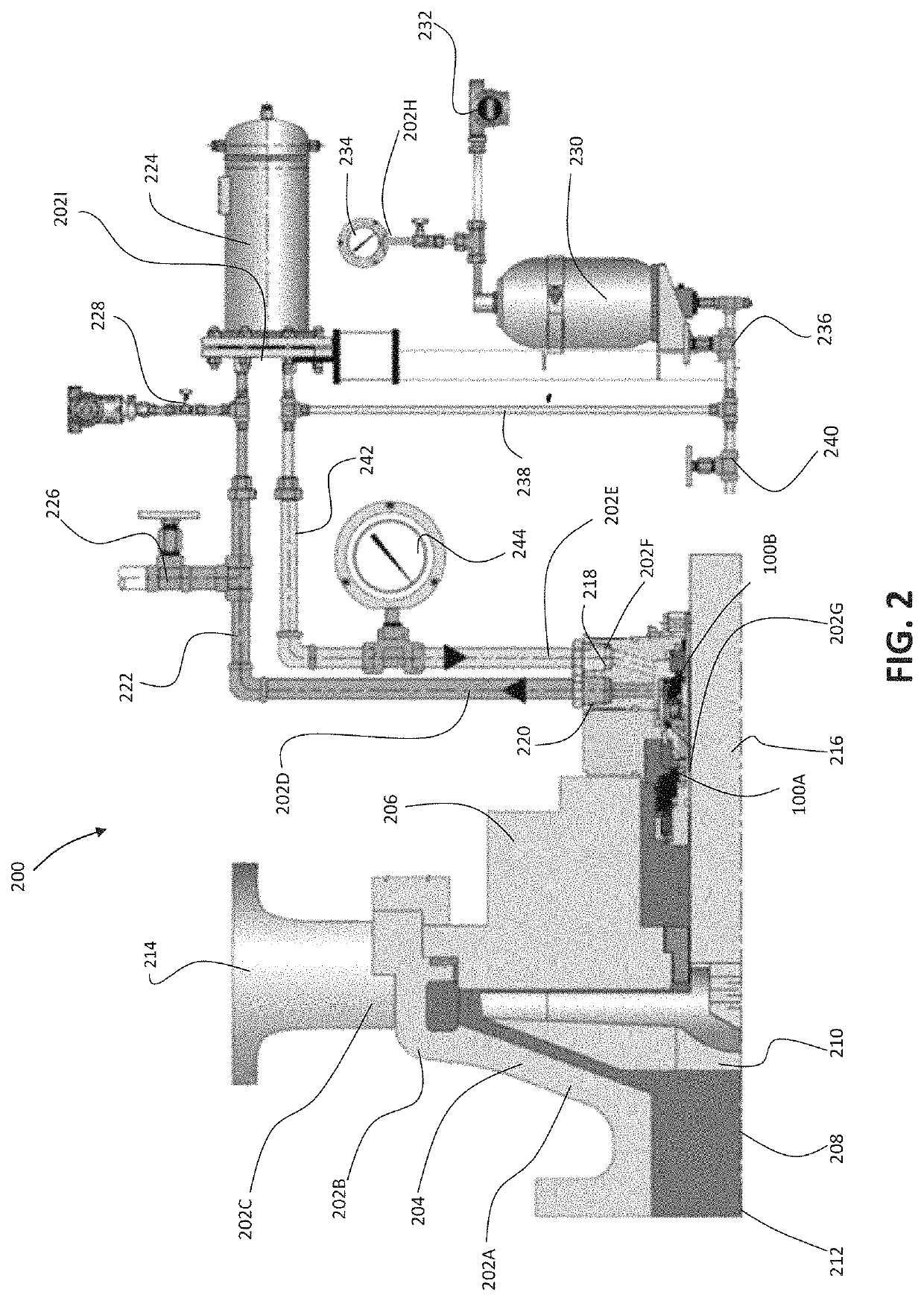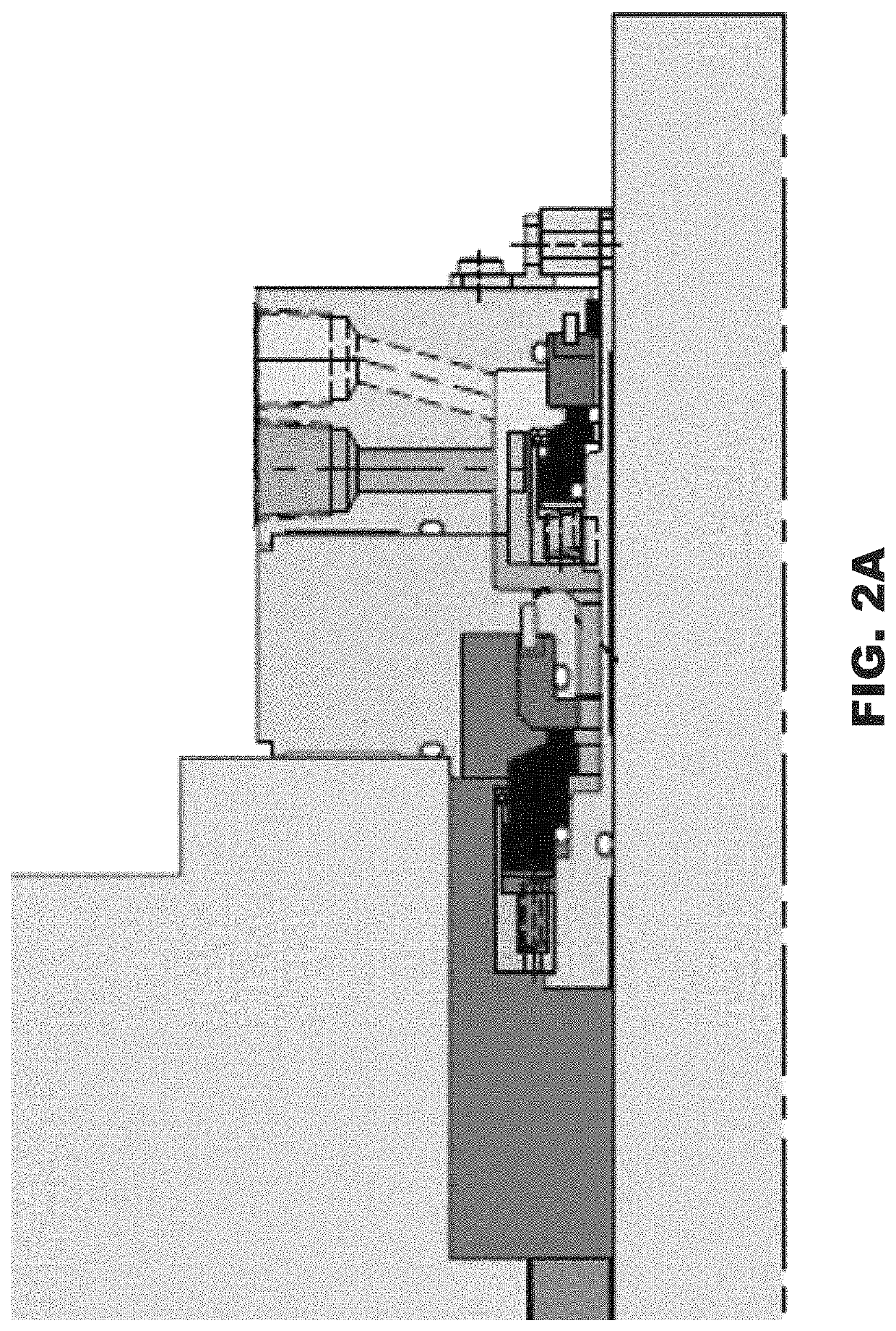Systems and methods for predictive diagnostics for mechanical systems
a predictive diagnostic and mechanical system technology, applied in the field of mechanical seal systems, can solve the problems of mechanical seal failure, excessive wear of the seal, and collapse of the thin film of lubricant, and achieve the effect of improving reliability and speed
- Summary
- Abstract
- Description
- Claims
- Application Information
AI Technical Summary
Benefits of technology
Problems solved by technology
Method used
Image
Examples
Embodiment Construction
[0062]Referring to FIG. 1, a mechanical seal 100 according to the prior art is depicted. Details of the mechanical seal 100 are described in the Background section above. In other embodiments, mechanical seal 100 can be an American Petroleum Industry (API) Standard 682 compliant seal. The American Petroleum Industry standards represent the oil and natural gas industry's collective wisdom on environmental protection, sound engineering and operating practices and safe, interchangeable equipment and materials. The API Standards Program is accredited by the American National Standards Institute (ANSI), and many of the API standards have been incorporated into state and federal regulations.
[0063]Referring to FIG. 2, a mechanical seal system 200 including mechanical seal 100 is depicted in accordance with an embodiment of the disclosure. In this embodiment, mechanical seal system 200 is depicted as an American Petroleum Industry (API) Standard 53B compliant system. Other contemplated mech...
PUM
 Login to View More
Login to View More Abstract
Description
Claims
Application Information
 Login to View More
Login to View More - R&D
- Intellectual Property
- Life Sciences
- Materials
- Tech Scout
- Unparalleled Data Quality
- Higher Quality Content
- 60% Fewer Hallucinations
Browse by: Latest US Patents, China's latest patents, Technical Efficacy Thesaurus, Application Domain, Technology Topic, Popular Technical Reports.
© 2025 PatSnap. All rights reserved.Legal|Privacy policy|Modern Slavery Act Transparency Statement|Sitemap|About US| Contact US: help@patsnap.com



